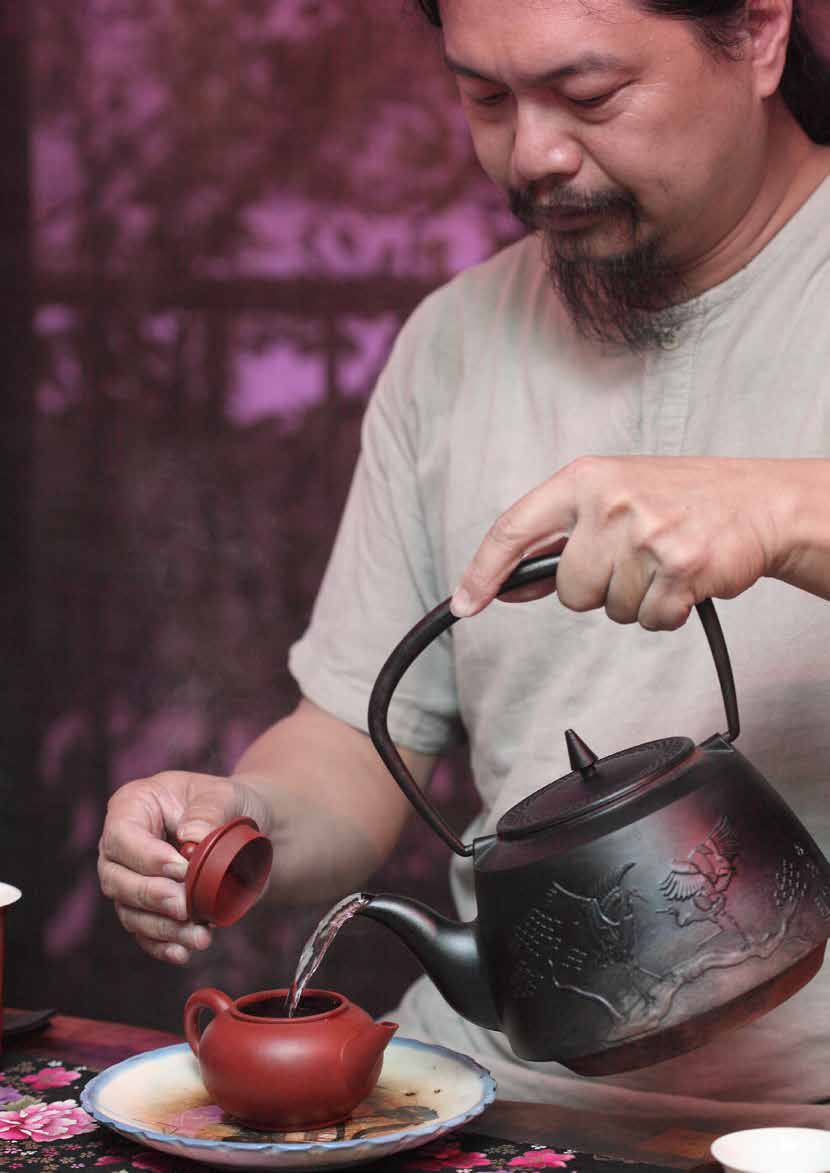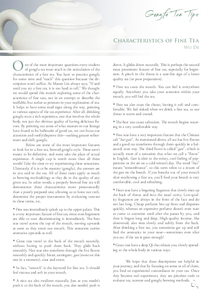
One of the most important questions every student
of gongfu tea must reach is the articulation of the
characteristics of a fine tea. You have to practice gongfu
for some time and "reach" this question because the description won't
suffice. As Master Lin always says, "If and
until you try a fine tea, it is too hard to tell." We thought
we would spend this month exploring some of the characteristics of fine
teas, not in an attempt to describe the
ineffable, but rather as pointers in your exploration of tea.
It helps to have some road signs along the way, pointing
to various aspects of the tea experience. After all, drinking
gongfu tea is a rich experience, one that involves the whole
body, not just the obvious quality of having delicious flavors. By pointing
out some of what masters in our lineage
have found to be hallmarks of good tea, we can focus our
attention and verify/disprove this - seeking greater refinement and skill,
gongfu.

Below are some of the most important features
to look for in a fine tea, brewed gongfu style. These aren't
meant to be definitive, and none take the place of actual
experience. A single cup is worth more than all these
words! Take the time to try experiencing these sensations.
Ultimately, if it is to be mastery (gongfu), the answers are
in you and in the tea. All of these traits apply as much
to brewing methodology as they do to the quality of any
given tea. In other words, a properly brewed fine tea will
demonstrate these characteristics more pronouncedly
than a poorly prepared one, allowing us to hone our craft,
determine the proper instruments by evaluating teaware
in these terms, etc.
- Fine teas immediately splash up to the upper palate. This is a very important feature of fine tea, since even beginners are able to start discriminating it immediately. The best teas travel across the top of the mouth, moving upwards as soon as they enter our mouth. This sensation carries aromatics upwards as well.
- Great teas travel to the back of the mouth naturally, without having to push them back. They glide back smoothly. Nice teas also transform through the five flavors smoothly and quickly: bitter, astringent, gan (more on this one in a moment), sour and sweet.
- In fact, "smooth" is the keyword for fine tea. It should feel viscous and soft in your mouth.
- A nice tea also swallows naturally. Just as you needn't push it to the back of the mouth, you also needn't push it down. It glides down naturally. This is perhaps the second most prominent feature of fine tea, especially for beginners. A pinch in the throat is a sure-fire sign of a lower quality tea (or poor preparation).
- Fine tea coats the mouth. You can feel it everywhere equally. Anywhere you take your attention within your mouth, you will feel the tea.
- Fine tea also coats the throat, leaving it soft and comfortable. We feel slaked when we drink a fine tea, as our throat is warm and coated.
- The best teas cause salivation. The mouth begins watering in a very comfortable way.
- Fine teas have a very important feature that the Chinese call "hui gan". As mentioned above, all tea has five flavors and a good tea transforms through them quickly in a balanced, even way. The third flavor is called "gan", which is actually more of a sensation that what we call a "flavor" in English. Gan is akin to the minty, cool feeling of peppermint or the air on a cold winter's day. The word "hui" means "remembrance", so this term refers to a return of the gan on the breath. If you breathe out of your mouth after swallowing a fine tea, you'll find your breath is very comfortable, cool and refreshing.
- Finer teas have a lingering fragrance that slowly rises up the back of throat and into the nasal cavity. Low-quality fragrances are always in the front of the face and do not last long. Cheap perfume hits up front and disperses quickly, whereas an expensive perfume doesn't even start to come to attention until after she passes by you, and then it lingers long and deep. High-quality incense, like aloeswood, also rises slowly and subtly from the back. After drinking a fine tea, you sometimes get up and still find the aromatics in your nose - sometimes even after you eat, if the tea is great enough!
- Great teas have a deep Qi that relaxes you, slowly spreading to the whole body in various ways.
We hope that these descriptions are helpful in
your journey, and that by focusing on some or all of them,
you find an experiential concordance in your tea. Once
they become real experiences, they are priceless tools to
evaluate tea, teaware and gongfu brewing methods.





